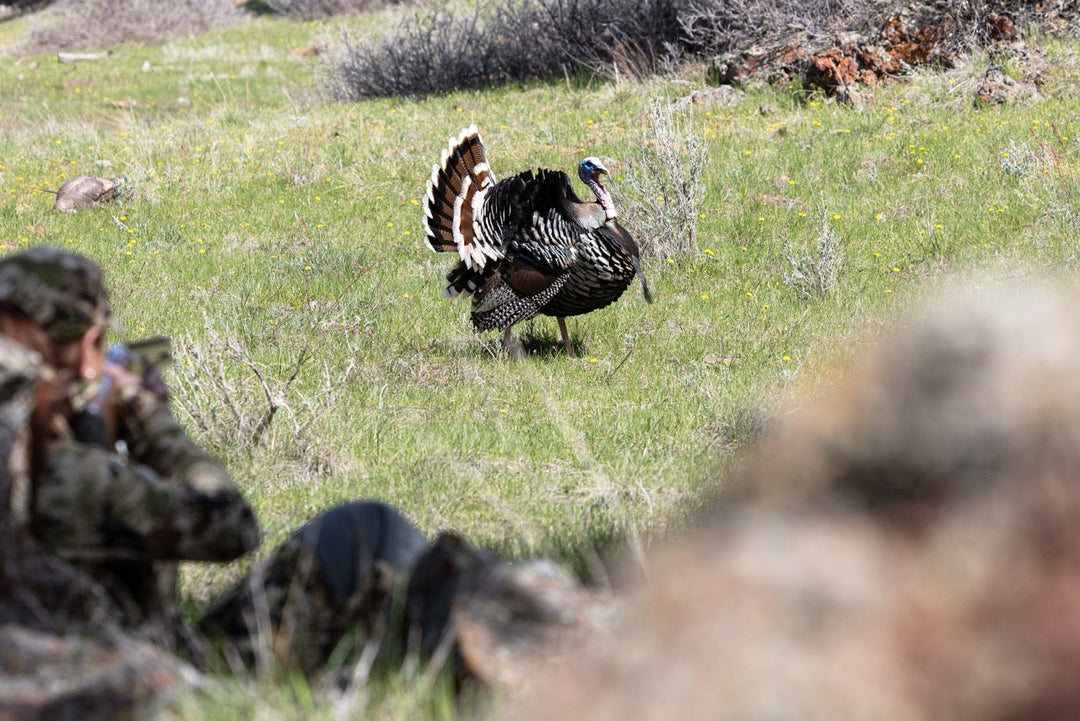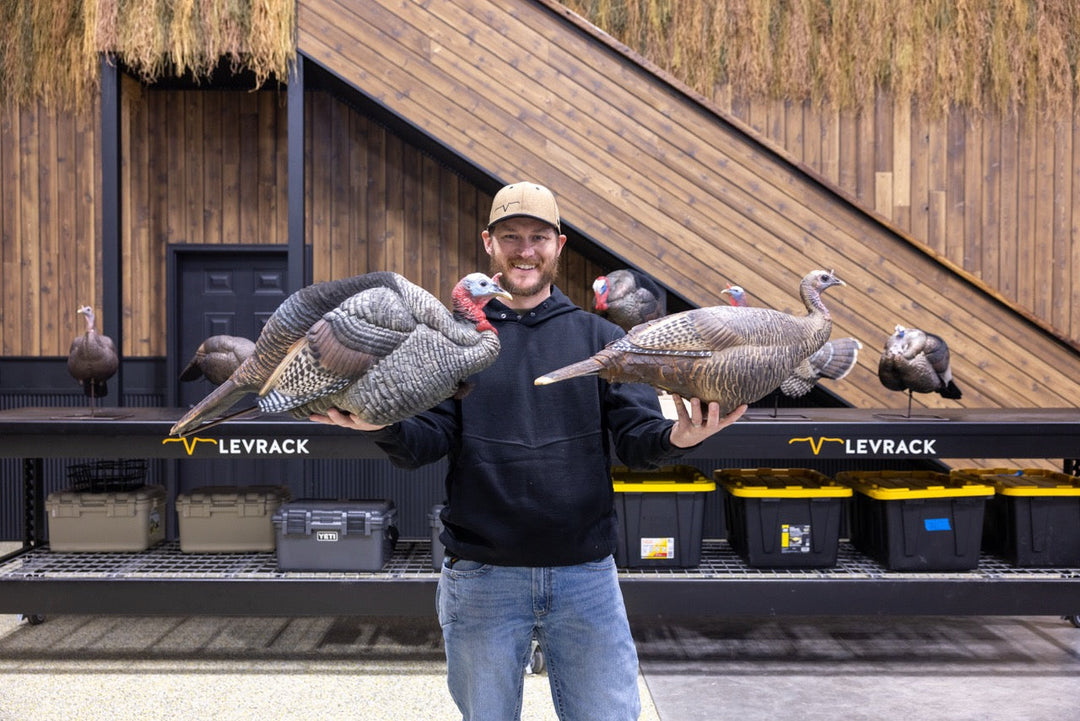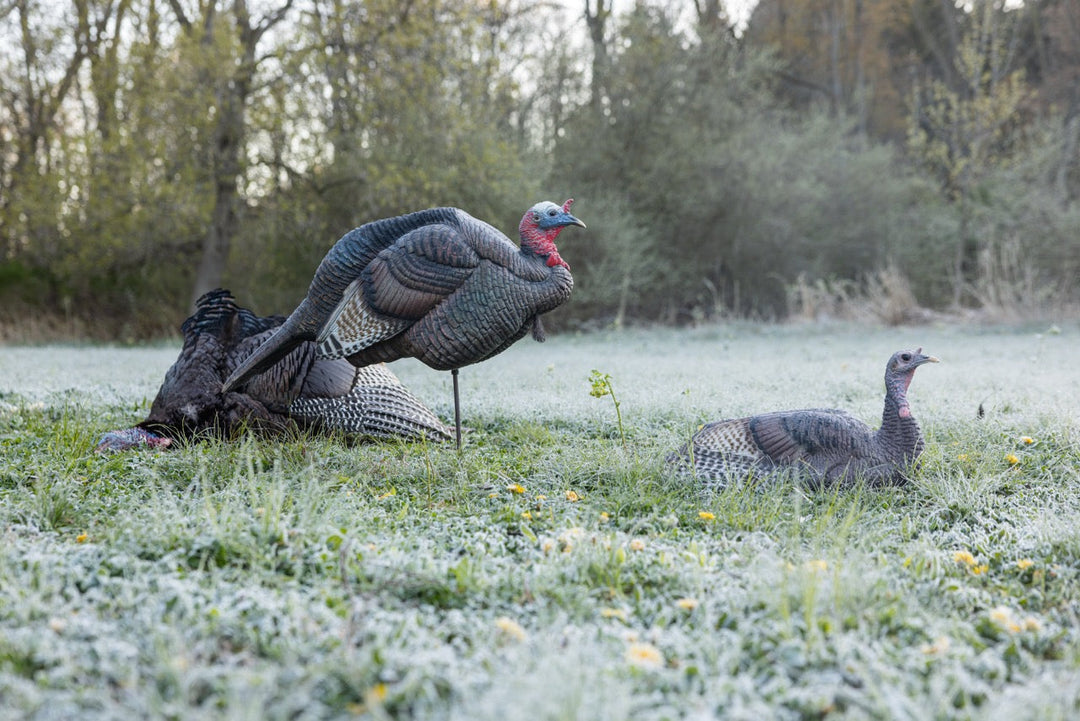How to Read the Poses and Build a Deadly Spring Setup
There’s a lot of noise out there when it comes to turkey hunting gear. And when it’s spring, and you’re dusting off the decoy bag, it can be easy to forget which hen pose does what—or why you even bought that weird-looking one in the first place.
Watch the full Flying VDU episode below:
Matt breaks down each decoy pose, what it means, and how to run them effectively for different stages of the season.
So here’s a breakdown of the core hen decoys we use, what each pose means, when to run them, and why the setup you build can make the difference between a hung-up Tom and one riding home in the truck bed.
Let’s talk hens.
The Upright Hen: The Workhorse
If you’re only running one hen, this is the one.
She’s alert but relaxed, tall enough to get above grass later in the season, and visually easy for a Tom to pick up at distance. The upright hen is the most versatile decoy in the flock—and still one of the best-sellers for good reason. Early season, midseason, late—she just works.
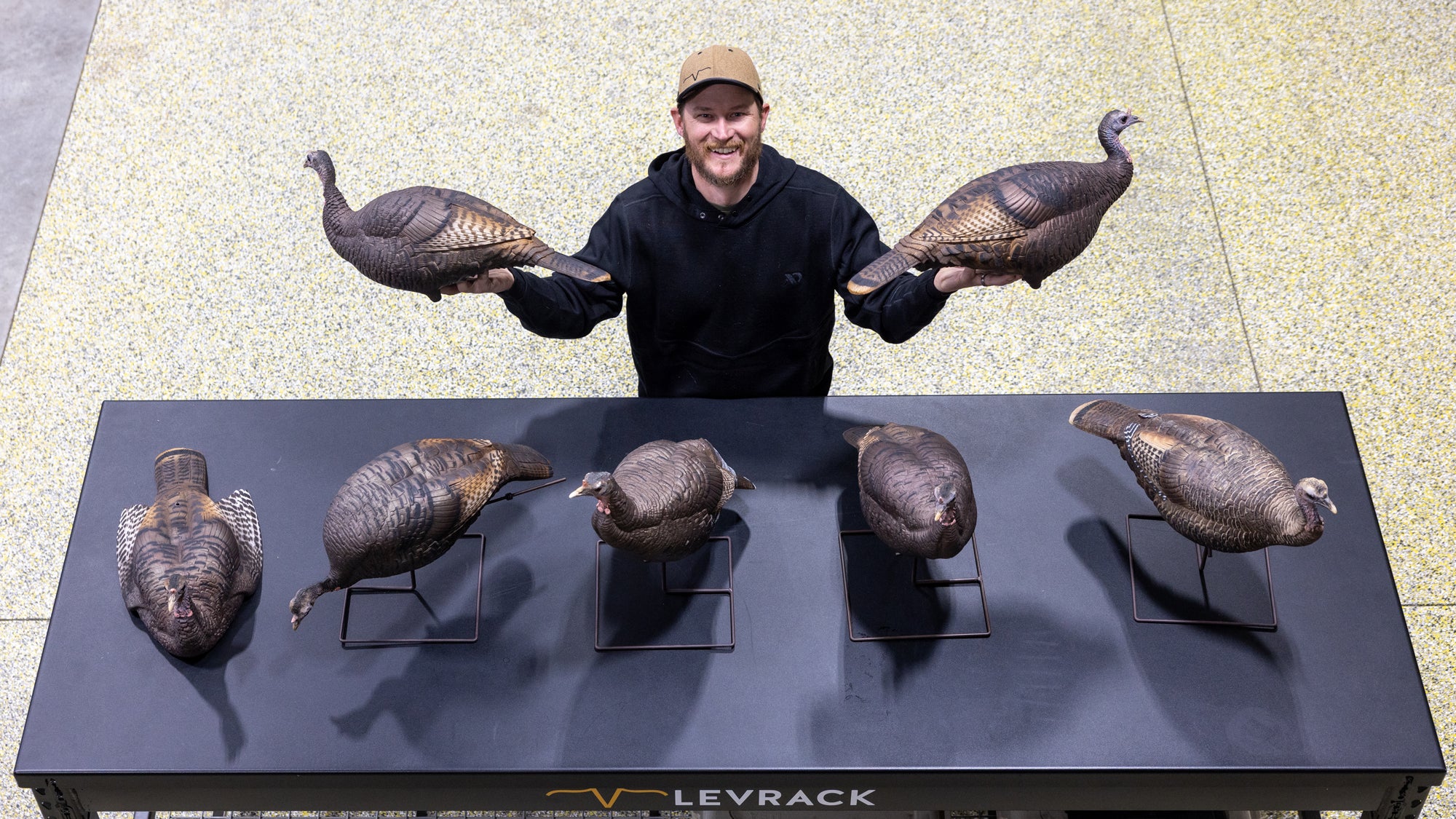
The Leading Hen: The Closer
This one’s a personal favorite—and for good reason.
The leading hen is posed like she’s walking off, just a few steps ahead. That movement triggers something in a Tom’s brain. He has to get around front and strut his stuff. She’ll pull him into your shooting lane like she’s on a mission.
When to use her: When you need to pull a bird to a specific spot. Face her where you want the Tom to go. He’ll follow her line of sight almost every time.
The Feeding Hen: The Confidence Booster
She’s head down, in a relaxed state, and does one thing really well—makes the whole spread feel safe.
But don’t run her alone. Her visibility is poor, and a Tom might never notice her. She shines when she’s part of a group—adding realism and calm to a more assertive decoy layout.
When to use her: To build trust in a spread. Think field edges, open country, or anywhere you’re running 2–3 decoys.
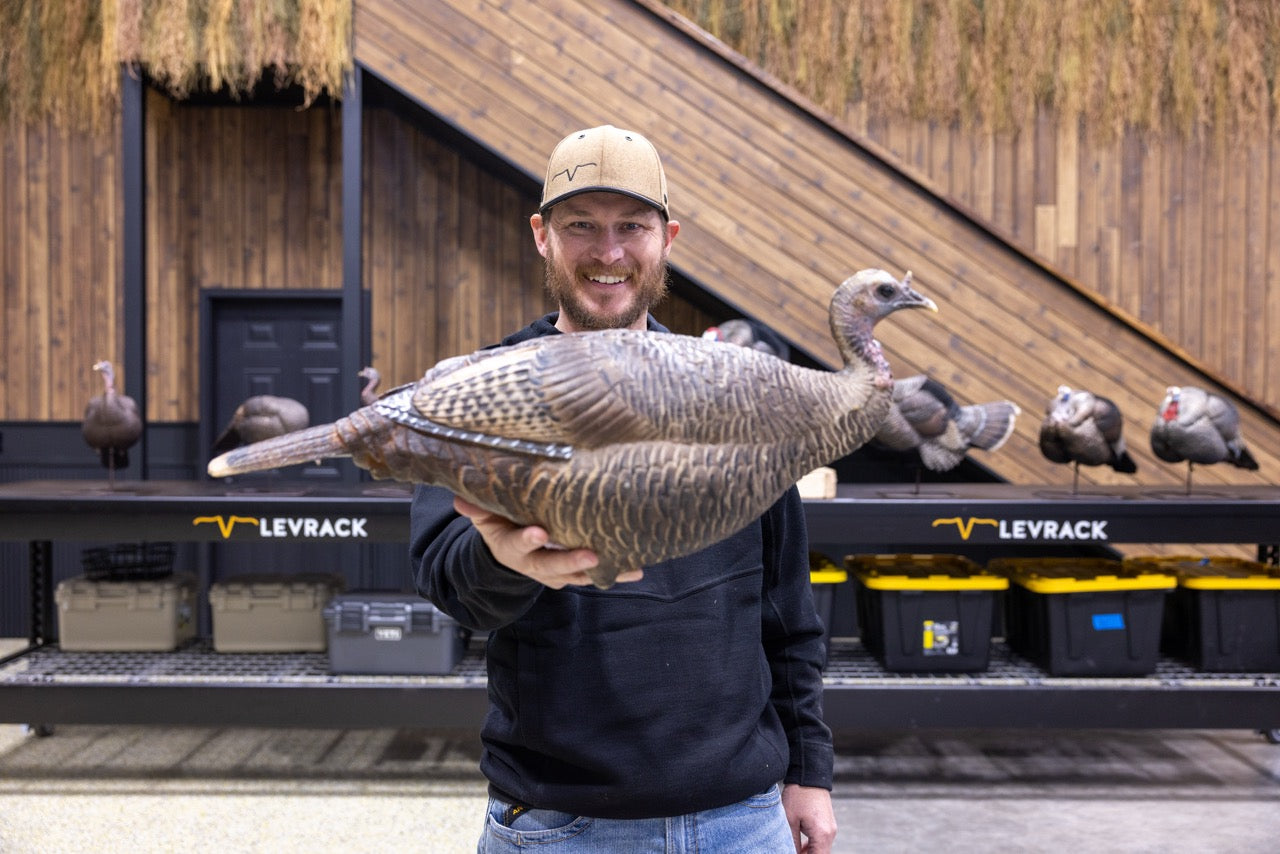
The Posturing Hen: The Fighter
This gal’s got attitude.
The posturing hen is a dominant, puffed-up pose that challenges other hens. She’s not for every hunt—but in the early season, when pecking order drama is in full swing, she can be deadly. Her whole job is to pick a fight with the boss hen… and bring her (and the Tom she’s guarding) right into your lap.
When to use her: Early season. Use aggressive calling to trigger dominant hens. Pair her with your best tree talk and get ready for a show.
The Mating Hen: The Closer (Part 2)
Low-profile and unmistakable—this hen is assuming the breeding position. And when a fired-up Tom sees her, game over.
But because she sits so low, visibility is an issue. Always pair her with a taller decoy (like the upright hen or a Jake) to help bring birds close enough to spot her.
When to use her: When you want to seal the deal. Early or late season, she screams “I’m ready.” Just make sure she’s visible.
Reading the Season
Spring turkey isn’t just one long rut—it comes in phases. For us in Montana, we think about it in three parts:
- Early Season (April 15–30): Birds are still grouped up. Dominance plays out in full force. Posturing hens work great here.
- Midseason (May 1–15): Toms are fired up, pushing country, looking for lone hens. Leading hens shine during this window.
- Late Season (May 15–31): Most hens are bred. Toms are solo or lazy. That calm confidence of a feeding or upright hen can help finish.
Build the Right Spread for the Job
Think about what your setup is signaling. A lone feeding hen is calm. A posturing hen is starting a fight. A leading hen is moving—and moving hens pull Toms like magnets.
Some spreads are aggressive. Some are subtle. Some are just one hen on a mission. But each pose has a job. Use the right one, and you’ll have a better shot at punching your tag this spring.
Final Thoughts
These decoys aren’t magic. But they’re tools—and like any tool, they work best when you know when and how to use them.
Figure out your game plan. Pick the pose that fits your hunt. And if you're unsure? Grab an upright hen and get after it. She's been killing birds since ’09 and still hasn’t lost her edge.
See you in the woods.





